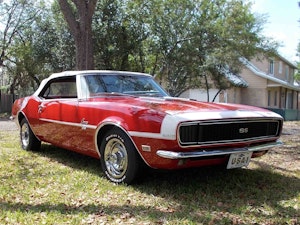Media | Articles
Power door lock repair tips
Now that I have to come up with a legitimate reason to leave the house, I have fewer excuses to put off doing the upkeep and maintenance on my 1998 Jeep Cherokee, the latest addition to my small fleet and my current daily driver. Aside from a few electronic parts that have conked out in its 20+ years of service, it’s in very solid shape. The cruise control, rear wipers, and front power door locks are the only non-functional bits so far, and after a trip to the junkyard to pick up some actuators, I can finally address those issues.
Because my junkyard tool kit includes a cordless impact wrench, I had a power supply to test the actuators before buying them. Buying ancient electronics is a gamble anyway, but the prices on these were less than half of what an aftermarket replacement would cost. Here’s how I swapped the old parts for different old (but functional) parts.

A T30 socket, a #2 Phillips driver, and a flathead were all that was necessary for this quick project. Your application may vary, but any time I have my hand inside a door I try to wear gloves, as there are too many sharp metal edges for my hands to ever come out unscathed.
Marketplace
Buy and sell classics with confidence

Step one is removing the screws that hold the door panel in place and pulling the trim clips free, the panel can be lifted up out of the slot that indexes its top lip.

Next, the rods connecting the door lock and handle mechanisms have to be removed. Their clips can become fragile with age, but I was able to get them all out unscathed. A long flathead screwdriver to help lift them off made it simple. If you are also working with used parts you can grab extra clips when you’re at the junkyard, just in case.

With the rods removed, the only thing holding the panel on was the wiring to the switches, which I was easily able to pull out after depressing the tang on the plug.


Once the panel was off, the waterproof membrane stuck to the inside of the door could be peeled down a bit. Or a lot, if you happen to drop a tool into the inner recesses of the door.

My Jeep had a few access holes that allowed the clips to be removed from the actuator rods. Like the ones that attach to the door panel, the clips swing out of the way to let the rods disengage from their linkage. The oval plug, seen on the rear jamb side of the door, can also be removed to access the top clip of the rod that connects to the latch to the door handle.

Here is the old, dusty part on the left, with the cleaned up actuator on the right. When I removed the actuator at the junkyard I made sure to get both rods from the donor vehicle, although I didn’t use either when installing the new part. In hindsight, it took much more fighting and fussing to install it this way than it did to remove the part at the junkyard after removing the access plug. After some careful positioning, the new part went back in its place and a functional part is home at last. Next up: rear wiper!









